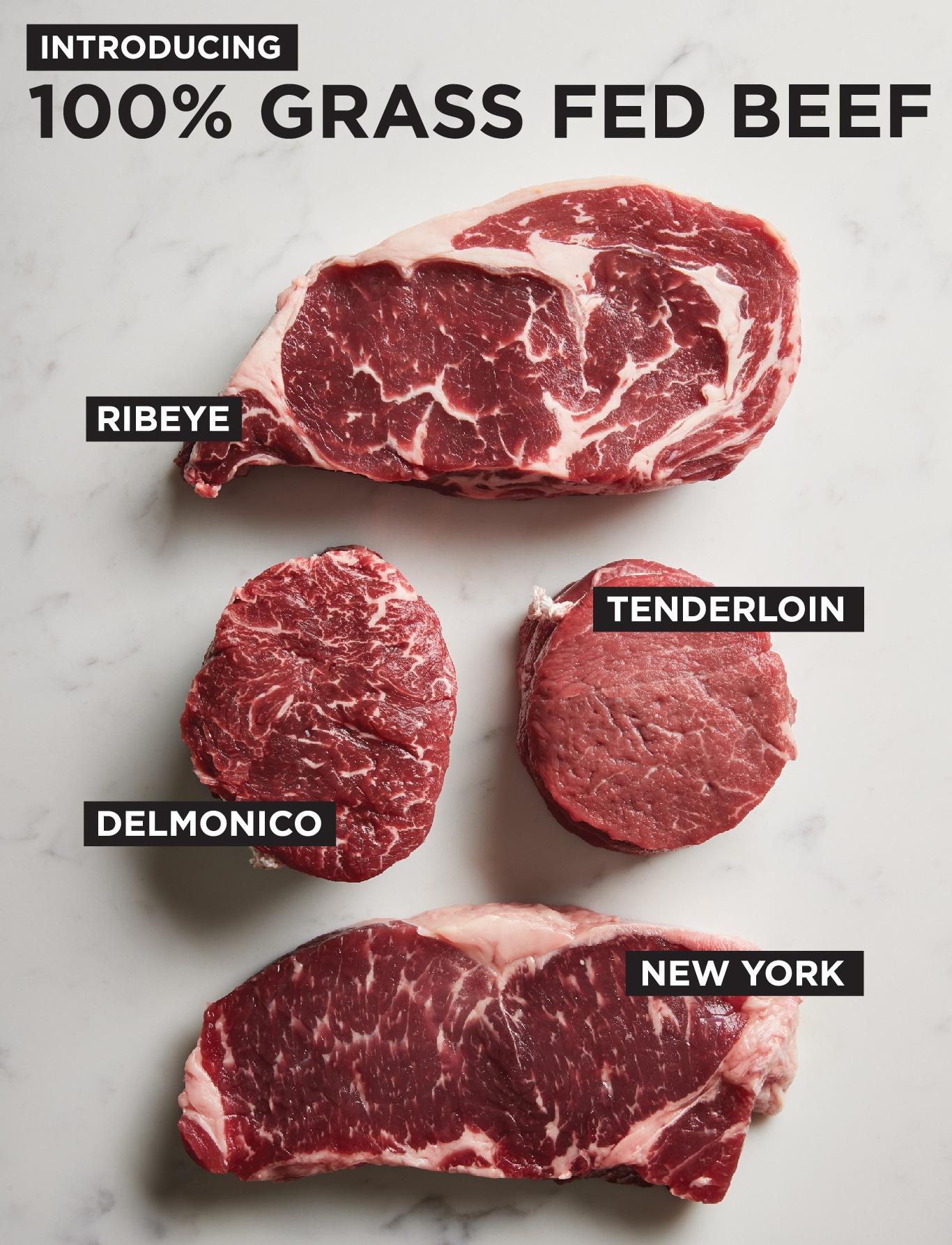In a world increasingly drawn to the intricacies of our food sources, the debate surrounding meat production and its impact on health is ever-evolving. among the myriad choices available, grass-fed beef stands out not just for its rich flavour and culinary possibilities, but also for its distinctive nutritional profile. As consumers become more health-conscious and environmentally aware,understanding the benefits of grass-fed beef,notably in terms of omega-3 fatty acids and conjugated linoleic acid (CLA),is essential. This article delves into the nutritional breakdown of grass-fed beef, highlighting the advantages these components offer.Join us as we explore how the natural diet of these cattle not only shapes their meat but also influences our diets, well-being, and connection to sustainable farming practices.
Exploring Omega-3 Fatty Acids in Grass-Fed Beef
When it comes to the nutritional benefits of grass-fed beef, the presence of omega-3 fatty acids stands out as a significant factor. Grass-fed cattle typically consume a diet rich in forage, wich naturally boosts the levels of these essential fatty acids in their meat. Omega-3s are known for their anti-inflammatory properties and their potential role in promoting heart health. The unique dietary habits of grass-fed cattle lead to a higher ratio of omega-3 to omega-6 fatty acids, making these meats particularly desirable for health-conscious consumers. Some key benefits of omega-3s found in grass-fed beef include:
- Improved cardiovascular health
- Enhanced brain function
- Support for healthy skin
Along with omega-3 fatty acids, grass-fed beef is also a notable source of conjugated linoleic acid (CLA), which has garnered attention for its potential weight management qualities and cancer-fighting properties.CLA is a type of fat that is found more abundantly in the meat from grass-fed animals compared to those raised on grain. This nutrient can promote lean muscle development while aiding fat loss, making it a valuable addition to a balanced diet. The following table highlights the average omega-3 and CLA content in 100 grams of grass-fed beef:
| Nutrient | Amount (per 100g) |
|---|---|
| Omega-3 Fatty Acids | 70 mg |
| CLA | 300 mg |

The Role of Conjugated Linoleic Acid in Overall Health
Conjugated Linoleic Acid (CLA) is a naturally occurring fatty acid found predominantly in grass-fed beef and dairy products. Recognized for its potential benefits, CLA has garnered attention for its role in promoting overall health. One of the most celebrated attributes of CLA is its ability to aid in weight management by enhancing fat metabolism. This unique fatty acid may also play a significant role in improving body composition by reducing body fat while preserving lean muscle mass. Research suggests that consistent consumption of CLA-rich sources can definitely help in achieving a healthier body profile.
Along with weight management,CLA is believed to provide anti-inflammatory properties,which may contribute to reducing the risk of chronic diseases such as heart disease and diabetes. Furthermore, it has been associated with immune system support and improved bone health.Those seeking to increase their intake of CLA can benefit from dietary sources such as:
- Grass-fed beef
- Grass-fed dairy products
- Pasture-raised lamb
- Grass-fed butter
To emphasize the nutritional edge of grass-fed beef, the following table highlights the typical levels of CLA compared to grain-fed beef:
| Type of Beef | CLA content (per 100g) |
|---|---|
| Grass-fed Beef | 1.5 – 3.0g |
| Grain-Fed Beef | 0.5 - 1.0g |
This comparison highlights the increased CLA availability in grass-fed options, supporting their inclusion in a balanced diet aimed at optimizing health and well-being.

Comparative Nutritional Benefits: Grass-Fed vs.Grain-Fed beef
the debate surrounding the nutritional benefits of grass-fed and grain-fed beef is not just a matter of taste; it also extends into the realm of health benefits. Grass-fed beef typically contains higher levels of Omega-3 fatty acids compared to its grain-fed counterpart. This is largely due to the natural diet of grass, which is rich in these healthy fats. Studies have shown that grass-fed beef can contain up to three times more Omega-3s. Additionally, the levels of conjugated linoleic acid (CLA) found in grass-fed beef can be significantly higher, which is linked to various health benefits, including improved immune function and reduced body fat.
Moreover, the differences in nutritional profiles are not just about fats. Grass-fed beef is generally leaner and offers a higher concentration of essential vitamins and minerals. To illustrate this, consider the table below, which summarizes the key differences in nutrient composition:
| Nutrient | Grass-Fed Beef | Grain-Fed Beef |
|---|---|---|
| Omega-3 Fatty Acids | Up to 75 mg/100g | 30 mg/100g |
| CLA | 1.5 g/100g | 0.5 g/100g |
| Vitamin E | 3.5 mg/100g | 1 mg/100g |
| Selenium | 50 mcg/100g | 30 mcg/100g |

Practical Tips for Incorporating Grass-Fed Beef into Your Diet
Incorporating grass-fed beef into your diet can be both appetizing and nutritious. To make the transition easier,consider these practical tips:
- Start Slow: If you’re new to grass-fed beef,begin by replacing one meal a week with a dish featuring this meat.Gradually increase frequency as you become accustomed to its unique flavor.
- Choose Quality Cuts: Opt for grass-fed steaks, ground beef, or roasts, which are often more flavorful. Experiment with different cuts in recipes to discover your favorites.
- Explore Local Sources: Visit farmers’ markets or local butchers who specialize in grass-fed options, ensuring quality and supporting your community.
cooking grass-fed beef requires slight adjustments due to its lower fat content compared to conventional beef.Use these cooking techniques to maximize taste and nutrition:
- Lower the Cooking Temperature: Cook at medium or medium-low heat to prevent drying out and maintain tenderness.
- Marinate Wisely: Use marinades rich in acid, such as vinegar or lemon juice, to enhance flavor and moisture retention.
- Pair with Nutrient-Rich Sides: Serve grass-fed beef with a variety of colorful vegetables or whole grains to create a balanced meal.
| Cut of Grass-Fed Beef | omega-3 Content (g per 100g) | CLA Content (g per 100g) |
|---|---|---|
| brisket | 0.16 | 0.45 |
| Sirloin | 0.19 | 0.40 |
| Ground Beef | 0.40 | 0.30 |
To Conclude
the nutritional profile of grass-fed beef offers a compelling case for those seeking to enhance their diets with healthier meat options. With its notable content of omega-3 fatty acids and conjugated linoleic acid (CLA), grass-fed beef not only supports heart health but also presents a wealth of benefits that may align with various dietary goals. As consumers become increasingly conscious of the origins and impacts of their food, understanding the distinctions in nutritional composition—such as those between grass-fed and grain-fed beef—can empower informed choices. Whether you’re a devoted enthusiast of sustainable eating or simply curious about the benefits of grass-fed options, this exploration underscores the importance of knowing what’s on our plates. As we move forward,may this knowledge inspire more mindful consumption and a deeper appreciation for the complexities of our food sources.






